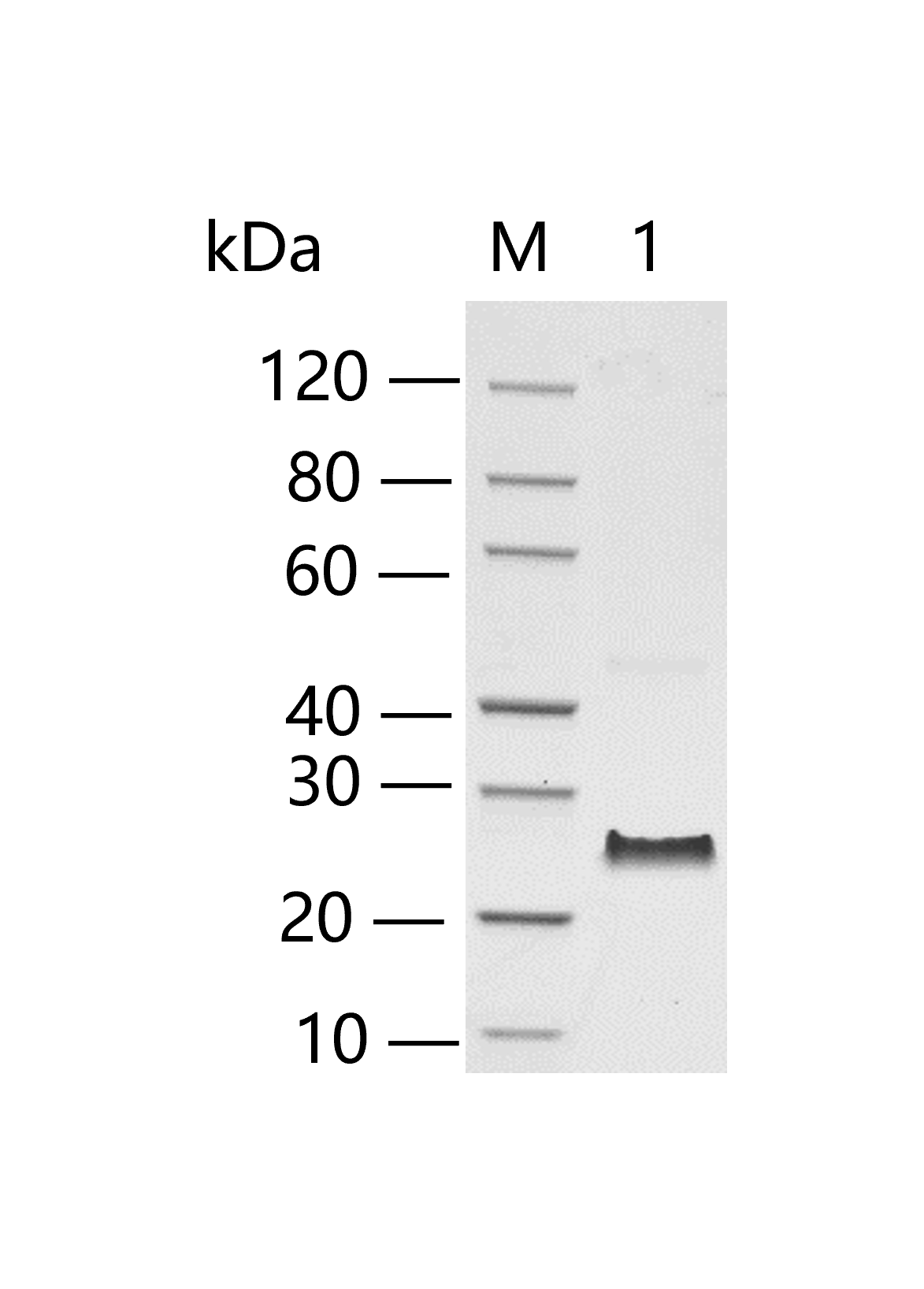| Species |
Mouse |
| Protein Construction |
TGF-β1 (Ala279-Ser390)
Accession # P04202 |
|
| Purity |
> 95% as analyzed by SDS-PAGE |
| Endotoxin Level |
< 1 EU/μg of protein by LAL method |
| Biological Activity |
ED50 is 5-25 pg/ml, measured by its ability to inhibit IL-4-dependent proliferation of TF-1 human erythroleukemic cells. |
| Expression System |
Human Cells |
| Apparent Molecular Weight |
~12.8 kDa, on SDS-PAGE under reducing conditions. |
| Formulation |
Lyophilized from a 0.2 μm filtered solution in 4 mM HCl. |
| Reconstitution |
It is recommended that this vial be briefly centrifuged prior to opening to bring the contents to the bottom. Reconstitute the lyophilized powder in ddH₂O up to 100 μg/ml. |
| Storage & Stability |
Upon receiving, this product remains stable for up to 6 months at -70°C or -20°C. Upon reconstitution, the product should be stable for up to 1 week at 4°C or up to 3 months at -20°C. Avoid repeated freeze-thaw cycles. |


Lane 1: 2 μg of TGF-β 1, Mouse, non-reducing (NR)
> 95% as analyzed by SDS-PAGE
| Target Background |
Transforming growth factor beta 1 (TGFβ1) is the prototype of a growing superfamily of peptide growth factors and plays a prominent role in a variety of cellular processes, including cell-cycle progression, cell differentiation, reproductive function, development, motility, adhesion, neuronal growth, bone morphogenesis, wound healing, and immune surveillance. TGF-β1, TGF-β2 and TGF-β3 signal via the same heteromeric receptor complex, consisting of a ligand binding TGF-β receptor type II (TβR-II), and a TGF-β receptor type I (TβR-I). Signal transduction from the receptor to the nucleus is mediated via SMADs. TGF-β expression is found in cartilage, bone, teeth, muscle, heart, blood vessels, hematopoietic cells, lung, kidney, gut, liver, eye, ear, skin, and the nervous system. |
| Synonyms |
TGF-beta-1; CED; DPD1; TGFB; TGF-b1; TGFB1; CEDLAP; latency-associated peptide; TGF beta; TGF-beta 1 protein; transforming growth factor beta-1 |
For laboratory research use only. Direct human use, including taking orally and injection and clinical use are forbidden.






































